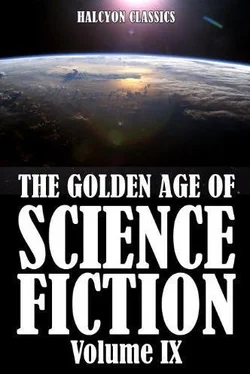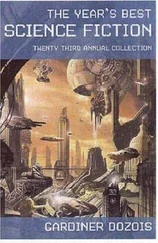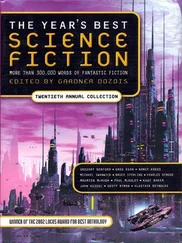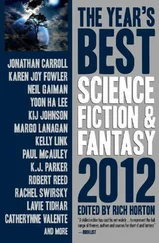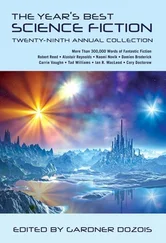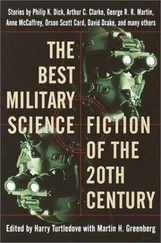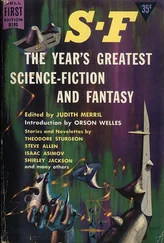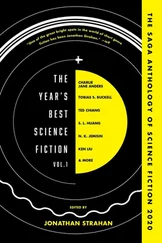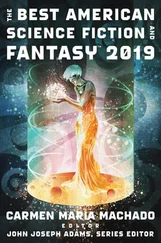“Let ’em. You can stall for a few months. You’ll need that money more for other purposes. You’ve installed that paraffin lining?”
“Yes—I got a report on that of ‘finished’ last week. How have you made out?”
Buck Kendall’s face fell. “Not so hot. Devin’s been the biggest help—he did most of the work on that neutron gun really—”
“After,” McLaurin interrupted, “you told him how.”
“—but we’re pretty well stuck now, it seems. You’ll be off duty tomorrow evening, can’t you drop around to the lab? We’re going to try out a new system for releasing atomic energy.”
“Isn’t that a pretty faint hope? We’ve been trying to get it for three centuries now, and haven’t yet. What chance at it within a year or so?—which is the time you allow yourself before the Stranger returns.”
“It is, I’ll admit that. But there’s another factor, not to be forgotten. The data we got from correlating those ‘misreadings’ from the various IP posts mean a lot. We are working on an entirely different trail now. You come on out, and you can see our new apparatus. They are working on tremendous voltages, and hoping to smash the thing by a brutal bombardment of terrific voltage. We’re trying, thanks to the results of those instruments, to get results with small, terrifically intense fields.”
“How do you know that’s their general system?”
“They left traces on the records of the post instruments. These records show such intensities as we never got. They have atomic energy, necessarily, and they might have had material energy, actual destruction of matter, but apparently, from the field readings it’s the former. To be able to make those tremendous hops, light-years in length, they needed a real store of energy. They have accumulators, of course, but I don’t think they could store enough power by the system they use to do it.”
“Well, how’s your trick ‘bank’ out on Luna, despite its twelve-foot walls, going to stand an atomic explosion?”
“More protective devices to come is our only hope. I’m working on three trails: atomic energy, some type of magnetic shield that will stop any moving material particle, and their faster-than-light thing. Also, that fortress—I mean, of course, bank—is going to have a lot of lead-lined rooms.”
“I wish I could use the remaining money the Board gave me to lead-line a lot of those IP ships,” said McLaurin wistfully. “Can’t you make a gamma-ray bomb of some sort?”
“Not without their atomic energy release. With it, of course, it’s easy to flood a region with rays. It’ll be a million times worse than radium ‘C,’ which is bad enough.”
“Well, I’ll send through this petition for armaments. They’ll pass it all right, I think. They may get some kicks from old Jacob Ezra Stubbs. Jacob Ezra doesn’t believe in anything war-like. I wish they’d find some way to keep him off of the Arms Petition Board. He might just as well stay home and let ’em vote his ticket uniformly ‘nay.’” Buck Kendall left with a laugh.
* * *
Buck Kendall had his troubles though. When he had reached Earth again, he found that his properties totaled one hundred and three million dollars, roughly. One doesn’t sell properties of that magnitude, one borrows against them. But to all intents and purposes, Buck Kendall owned two half-completed ship’s hulls in the Baldwin Spaceship Yards, a great deal of massive metal work on its way to Luna, and contracts for some very extensive work on a “bank.” Beyond that, about eleven million was left.
A large portion of the money had been invested in a laboratory, the like of which the world had never seen. It was devoted exclusively to physics, and principally the physics of destruction. Dr. Paul Devin was the Director, Cole was in charge of the technical work, and Buck Kendall was free to do all the work he thought needed doing.
Returned to his laboratory, he looked sourly at the bench on which seven mechanicians were working. The ninth successive experiment on the release of atomic energy had failed. The tenth was in process of construction. A heavy pure tungsten dome, three feet in diameter, three inches thick, was being lowered over a clear insulum dome, a foot smaller. Inside, the real apparatus was arranged around the little pool of mercury. From it, two massive tungsten-copper alloy conductors led through the insulum housing, and outside. These, so Kendall had hoped, would surge with the power of broken atoms, but he was beginning to believe rather bitterly, they would never do so.
Buck went on to his offices, and the main calculator room. There were ten calculator tables here, two of them in operation now.
“Hello, Devin. Getting on?”
“No,” said Devin bitterly, “I’m getting off. Look at these results.” He brought over a sheaf of graphs, with explanatory tables attached. Rapidly Buck ran through them with him. Most of them were graphs of functions of light, considered as a wave in these experiments.
“H-m-m-m—not very encouraging. Looks like you’ve got the field—but it just snaps shut on itself and won’t work. The lack of volume makes it break down, if you establish it, and makes it impossible to establish in the first place without the energy of matter. Not so hot. That’s certainly cock-eyed somewhere.”
“I’m not. The math may be.”
“Well”—Kendall grinned—“it amounts to the same thing. The point is, light doesn’t. Let’s run over that theory again. Light is not only magnetic; but electric. Somehow it transforms electric fields cyclically into magnetic fields and back again. Now what we want to do is to transform an electric into a magnetic field and have it stay there. That’s the first step. The second thing, is to have the lines of magnetic force you develop, lie down like a sheath around the ship, instead of standing out like the hairs on an angry cat, the way they want to. That means turning them ninety degrees, and turning an electric into a magnetic field means turning the space-strain ninety degrees. Light evidently forms a magnetic field whose lines of force reach along its direction of motion, so that’s your starting point.”
“Yes, and that,” growled Devin, “seems to be the finishing point. Quite definitely and clearly, the graph looped down to zero. In other words, the field closed in on itself, and destroyed itself.”
“Light doesn’t vanish.”
“I’ll make you all the lights you want.”
“I simply mean there must be something that will stop it.”
“Certainly. Transform it back to electric field before it gets a chance to close in, then repeat the process—the way light does.”
“That wouldn’t make such a good magnetic shield. Every time that field started pulsing out through the walls of the ship it would generate heat. We want a permanent field that will stay on the job out there. I wonder if you couldn’t make a conductor device that would open that field out—some special type of oscillating field that would keep it open.”
“H-m-m-m—that’s an angle I might try. Any suggestions?”
Kendall had suggestions, and rapidly he outlined a development that appeared from some of the earlier mathematics on light, and might be what they wanted.
* * *
Kendall, however, had problems of his own to work on. The question of atomic energy he was leaving alone, till the present experiment either succeeded, or, as he rather suspected, failed as had its predecessors. His present problem was to develop more fully some interesting lines of research he had run across in investigating mathematically the trick of turning electric to magnetic fields and then turning them back again. It might be that along this line he would find the answer to the speed greater than that of light. At any rate, he was interested.
Читать дальше
